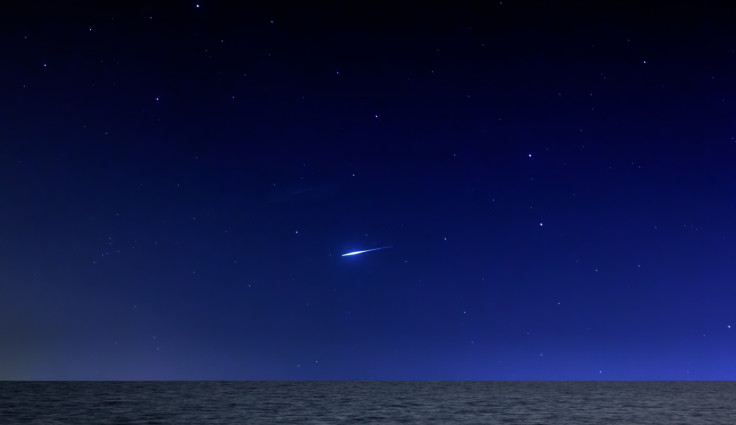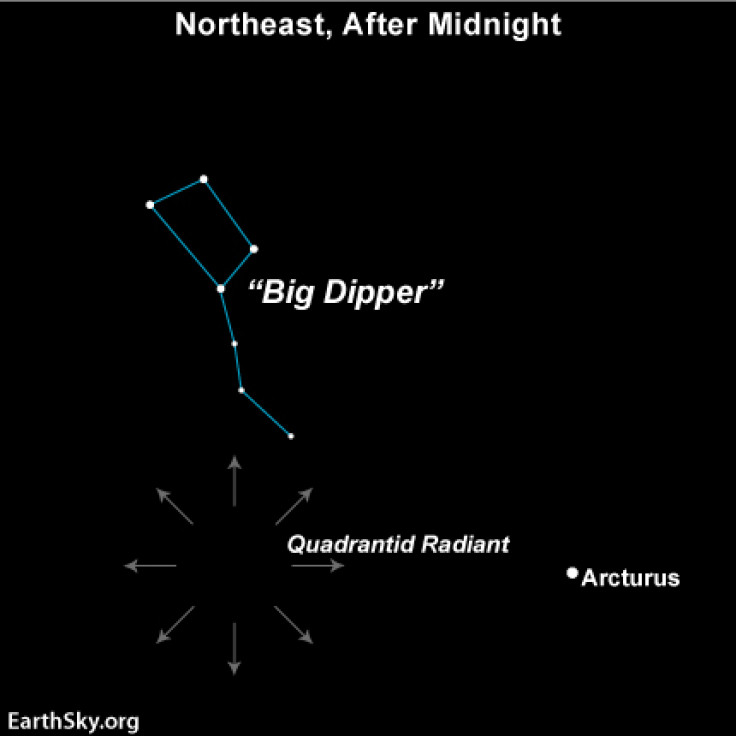Quadrantid meteor shower 2015: Where to watch spectacular shooting stars in the UK and US

The night sky will light up with a brilliant display of shooting stars over the coming days, as the annual Quadrantid meteor shower makes its appearance for 2015.
The Quadrantids will be visible from 3 January in the northern hemisphere, but although it can be as prolific as the Geminid meteor shower in December, they are harder to spot as the peak of the event is much shorter – lasting just a few hours.
According to past observations, the shower will peak on the night of the 3 January at 2am GMT, Space.com reported.
What are the Quadrantids?
The Quadrantids are a meteor shower with a radiant point inside the constellation of Boötes, which lies near the Big Dipper and the head of the constellation Draco. However, they are actually named after the Quadrans Muralis, a former constellation created by French astronomer Jerome Lalande which was divided into Boötes and Draco.
In 2003, astronomer Peter Jenniskens identified the parent body of the Quadrantids as the minor planet 2003 EH1. This is unusual, as most meteor showers come from comet fragments. The minor planet is thought to be related to the comet C/1490 Y1.
According to Space.com, the first report of the Quadrantids came from Adolphe Quetelet, who observed the meteor shower in 1825 while working at the Brussels Observatory.
Will we be able to see the meteor shower?

For skywatchers willing to brave the winter cold to spot the meteors, visibility depends on the time and the weather.
The UK is set to be showery and windy at the weekend and cloud cover may obscure the best views of the meteor shower, but you can check BBC Weather for updates.
In the United States, the Quadrantids may be hidden by a storm, with clouds from the east of the Rockies. Across the Northeast and in Florida, the weather will be relatively clear.
"It should be clear up and down the West Coast from Seattle to Los Angeles and also be clear across most of the Four Corners states," meteorologist Dave Samuhel for AccuWeather.com said.
Where can you watch them in the UK?
For the best chance of seeing the Quadrantids, it is important to find somewhere with little light pollution and remember to wrap up warm. You can also watch the event at home as the Slooh Community Observatory will be hosting a live streaming of the shower.
Below are various dark sky reserves and dark areas popular with astronomers in the UK. You can find others via the Dark Sky Discovery website.
London: The WaterWorks Nature Reserve, between Clapton and Leyton Midland Road rail station.
Manchester: Heaton Park is the largest municipal park in the city and contains an astronomy club.
Birmingham: Warley Woods is accessible by bus or car from the city. Those driving should take the A456 Hagley Road westbound from the centre.
Newcastle: Northumberland National Park is an internationally designated Dark Sky Park.
Cardiff: Brecon Beacons is a fantastic area for stargazing as it offers some of the darkest skies in the UK.
Belfast: Oxford Island National Nature Reserve is around 25 miles from the city, located on the shores of Lough Neagh.
Edinburgh: The Royal Observatory, in the Hermitage of Braid, is a good place to try and spot a shooting star.

Where can you watch them in the US?
The Quadrantids may be obscured by the waxing gibbous moon, which is set to light the night sky, but there are plenty of areas with low light pollution to try and see the meteor shower.
Arizona: The Kitt Peak National Observatory, near Tucson, is home to the world's largest collection of optical telescopes and the Sonoran desert is a favourite for astronomers.
New York: The Carl Schurz Park on the Upper East Side is the home of the Amateur Astronomers Association on Friday nights.
Pennsylvania: Cherry Springs State Park is a gold-certified International Dark Sky Park.
California: Death Valley National Park is also a gold-certified International Dark Sky Park, with very little artificial light within its 3.4 million acres.
Alaska: The Denali National Park and Preserve has minimal light pollution.
Utah: Bryce canyon National Park has very little light pollution and is protected by a group of volunteer astronomers known as the "Dark Rangers".
Illinois: The Hickory Knolls Discovery Centre in St Charles is a nature conservatory and a Dark Sky Park.
Texas: The Big Bend National Park in west Texas has an International Dark Sky status.
© Copyright IBTimes 2024. All rights reserved.






